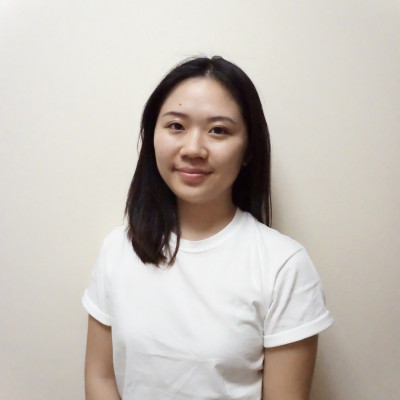Sessions / Show & Tell Presentation
Using ZOOM to Enrich Classroom Community Rapport #1390
In the distance learning environment, fostering and nurturing classroom community has become increasingly important. Language learning takes place beyond the classroom through community engagement, interactions with peers, family, and friends. By encouraging our learners to value the importance of social and intellectual relationships, students respond positively to risk-taking, increased self-esteem and self-efficacy, develop greater cognitive performance, and so much more. ZOOM provides an online platform for students to not only interact with each other “in” the classroom but outside of it. In this workshop, I seek to offer a practical demonstration of how to effectively do this. I will introduce pre-teaching activities such as turn-taking strategies and conversation phrases and expressions. Following this, I will provide a structure to guide students in leading discussion circles through ZOOM. The workshop will end with student and teacher reflections, insights, and potential pitfalls.
Designing materials to boost language learners’ reading skills with Clilstore #1413
This workshop will present the work of the EU-funded CLIL Open Online Learning Project (www.languages.dk). Since 2018, the project team have been updating and expanding the functionality of clilstore.eu - an Open Educational Resource which serves as a repository of open access materials and an authoring tool that enables educators to create multimedia learning units combining audio, video, text, images and Web 3.0 applications. Learner autonomy is underpinned by the way the authoring software treats embedded texts, that is, verbatim typescripts of audio or audiovisual recordings are automatically linked word for word to a nexus of online dictionaries that helps boost their reading skills.
This workshop will introduce participants to the ways in which Clilstore can support Content and Language Integrated Learning (CLIL) and language learning generally. A selection of sample learning units showing how Clilstore.eu is currently being used to good effect will be presented. Participants will then be given a hands-on demonstration of how to author a new teaching unit containing: video/ audio content, transcript with all words linked to online dictionaries in over 100 languages, and embedded learning tasks. Participants will also learn how to use Clilstore's inbuilt portfolio and personal vocabulary tools. The Clilstore user interface is currently available in the following languages: Danish, English, Spanish, Irish, Scottish Gaelic and Italian.
Immersive learning with Engage, a cross-platform VR app #1415
Immersive learning has been a buzz word in the field of education for the past several years as an increasing number of affordable consumer devices and free/proprietary apps become available. Among various types of immersive learning solutions, virtual reality (VR) has gained much attention among educational technology researchers and developers worldwide. In this workshop, the presenter will show how to use Engage (https://engagevr.io/), a proprietary virtual reality app accessible on VR and non-VR devices, to create immersive learning materials for on-demand purposes and to conduct synchronous online classes. Given that VR headsets are not yet available to the majority of learners, this platform specifically designed for education can be a promising tool as it is compatible with PCs, iOS and Android mobile devices as well as major VR headsets. Although the freemium version has many features, a paid account is more beneficial for professional content creation and real-time use. The participants of this workshop are requested to download the app on their device in advance.
Will virtual classrooms flourish or wither? #1446
The author invites JALTCALL participants to a BOF (birds-of-a-feather) meeting where everybody thinks out loud in an informal setting. Data, analyses, and predictions of pre- mid- and post-pandemic virtual classrooms are scarce because the situation is developing. Before the COVID-19 pandemic, some teachers and schools chose to use virtual classrooms. During the pandemic, many teachers and schools were forced to use virtual classrooms. Soon, we hope, the pandemic ends. How widely will virtual classrooms continue to be used? Will teachers and students return to pre-pandemic format? Or will they continue to prefer virtual classes? What variables (such as the student's age, or class size, or subject matter) might affect the choice between real and virtual classes? Nobody knows what the "new normal" will be. Let us attempt to predict, in order to prepare. The author will provide objective data and subjective analyses. Members of the audience are encouraged to voice their observations and intuitions. A link to an online survey will be announced before the conference to bootstrap discussion. Outcomes of this session may be reported at JALT-2021.
Peer feedback in speaking classes using Google Forms with DocAppender #1466
Recent Studies (for example Saito, 2016) have found that in addition to conventional teacher-centred feedback, peer feedback in speaking classes can provide students with meaningful learning opportunities. However, learner reticence to provide face-to-face feedback, coupled with time constraints and the recent shift to online classes can make such feedback problematic. By using the free DocAppender plug-in for Google Forms as detailed in this hands-on presentation, attendees will be shown a way for learners to provide fast and easily accessible feedback to their peers. Using Docappander, students can type their observations on a Google Form, with this feedback being automatically sent to a Google Document, thus enabling the speaker to obtain swift reactions to their speaking performance, without the need for face-to-face spoken feedback . Attendees will firstly be shown a brief demonstration of the app. I will then show how to create a simple Google Form to send feedback to individual Google Documents assigned to students. Finally, attendees will be offered suggestions for further applications of the software beyond peer review in speaking classes. This workshop will be of particular interest to those teaching debate or presentation classes.
Designing auto-scored speaking tasks in Moodle #1498
Rapid advances in AI offer opportunities to use speech recognition technology to enhance speaking tasks and improve speaking assessment for language learners. This online session will guide participants through the process of designing speaking tasks that can be automatically scored and that can provide individualized speaking feedback using the popular Moodle course management system. The speaking tasks can be designed and deployed using a free Moodle quiz-type plugin called ‘Speech Assessment’. The Speech Assessment quiz-type makes use of either the Google Speech Engine or the Amazon Transcribe engine to transcribe student speech into text which is then automatically scored using a phoneme-based algorithm.
In this session, participants will be provided with a demo Moodle course and user account, and the process of designing custom speaking activities using text, images, audio and video prompts will be outlined by the presenter using Zoom’s screen sharing function, and a shared Moodle course that all participants will have access to. Participants will be able to create their own auto-scored speaking task in the demo Moodle course as they follow along with the presenter’s screen share. Both close-ended and open-ended speaking tasks will be introduced along with suggestions on best practices for deploying online speaking practice and assessment activities.
Accelerating feedback in communicative language teaching/pal contexts using spreadsheets #1512
Performance Assisted Learning (PAL) is a teaching method that can yield great benefits—such as personal growth—all the while accomplishing immediate syllabus objectives. PAL is inspired by approaches to learning such as communicative language teaching (CLT). Kindred to CLT, PAL activities sometimes ask learners to extend themselves (for their ultimate benefit) beyond their habitual comfort zones. Without due diligence though, such activities can be difficult to evaluate and document to everyone’s satisfaction—learners, teachers, and administrators… Spreadsheets can help remedy this quandary. Unfortunately, they are an under-employed (dare I say mystery?) resource for many classroom practioners. Basic spreadsheet usage is not difficult, and teachers can use them to facilitate and actualize a realm of CLT/PIE possibilities. This Show & Tell presentation will demonstrate spreadsheet use for (a) enabling latitudes of choice for learners, (b) guiding and mentoring learners in online or face to face conditions, and (c) rapidly conveying feedback to students about their efforts.
The six principles for effective online learning #1487
During the 2020 academic year, the spread of COVID-19 made a systematic approach to teaching and learning almost impossible. Teachers and students faced a year of uncertainty about how classes were to be conducted, either in person, on demand or a variation thereof. At the presenters’ institution, a small private university in Western Japan, many teachers spent the entire year cobbling together an effective learning environment, while students coped with varying degrees of success. Given the upheaval experienced, and armed with lessons learned, the presenters sought to provide specific training for new and veteran students on how to tackle university learning with more success in 2021. In this ‘show and tell’ presentation, six principles for effective online learning will be introduced. These include: having the right technology, preparing a study space, making a learning plan, planning for self care, collaborating with classmates, and communicating with teachers. Each topic was introduced to students in a short video, and learners were invited to document their individual approaches to creating an effective learning environment in a video/ written portfolio. The topics were revisited over the course of the Spring semester to help students build autonomy by encouraging them to solidify and maintain their goals longitudinally. The presenters will report on the progress of the project and share student perspectives. While the ideas presented in this talk center on online learning environments, they are also applicable to a variety of teaching situations making this talk relevant to all educators.
Effective background slides in Zoom #1389
As educators turned to online tools during the COVID-19 pandemic, many adopted Zoom as their remote teaching platform. One feature of Zoom is the ability for teachers to share slides with their students synchronously during the lesson. Although this feature was essential for teaching, the teacher's face became separate from the slides. This disconnect is less than ideal for communication, especially for language learners. So, Zoom added a new feature in the Fall which allows the speaker to use a slide deck as a virtual background, allowing the speaker to appear inside of their own slides. In this workshop, participants will learn how to use this function and how to optimize slides according to design and pedagogical principles. The presenter will also demonstrate how to use this feature to record video content for students to view on demand. Workshop participants will be encouraged to interact with questions and suggestions.
Increasing interactivity with Nearpod: Strategies for effective online teaching #1491
Teaching online makes it challenging to encourage student engagement and interaction. In this workshop, I will share how I utilized Nearpod, an online teaching platform, to enhance my online English teaching practices. Research has shown that using Nearpod in English classes aids in promoting active learning by facilitating collaborative participation between students, teachers, and lesson content (Amasha et al., 2018, Hakami, 2020). My workshop will showcase how Nearpod can be used for effective discussions, reading activities, vocabulary activities, student-paced assignments, informing future instruction through its post-class reports feature, and more. Teachers will receive opportunities to test the functions as well. Finally, I will share the results of a quantitative opinion survey of 197 students’ self-reported perceptions of Nearpod, which indicated they felt an overall positive effect on their motivation and interaction in classes. Regardless of teaching online, hybrid, or face-to-face, the Nearpod lesson platform contains plenty of tools to increase interactivity and engagement in language learning. It is my hope that educators will leave this workshop feeling more confident in their ability to use this technology to facilitate interactive classes.
Rethinking the “failures” of online classes #1492
The presenter taught online classes through Zoom with class sizes of 40 (General English for university first-year students, and Oral English for university second-year students). Students very rarely turned on their cameras in class, a story that this presenter has heard often from many teachers. Aside from some limited success with Zoom polls and text answers in Zoom chat, student participation was difficult to elicit. The presenter felt that the classes were not going very well, and considered the classes to be far below the quality of in-person classes. However, students’ own written responses in Japanese on anonymous, university-wide class evaluation surveys at mid- and end-of-term paint a surprisingly different picture of their experiences in the presenter’s classes. The presenter will share summaries of what the students valued in these online classes, and how the students’ descriptions of some of the class activities contradict the presenters’ own negative self-evaluation of the same activities, forcing the presenter to view the success embedded into what was self-evaluated as mediocre if not an outright failure.
Active learning strategies for hybrid online lessons #1391
Learning strategies and lesson delivery methods are changing rapidly and with an increase in remote learning, many practitioners have found themselves conducting hybrid lessons, where some of their students are face to face and others are online. Needless to say, finding effective ways to achieve course objectives while maintaining student motivation and participation can be quite challenging. This poster presents various active learning techniques which have the potential to enhance hybrid learning environments, leading to increased engagement and improved student outcomes.
Teaching Professional and Technical Communication with New Media Design: Towards Linguistic Entrepreneurship in a COVID-2019 Landscape #1394
The COVID-19 landscape provides a unique opportunity for computer science (CS) majors to learn about the redefined impact of disruptive technologies in the market that will likely influence how we conduct our businesses in years to come, and in turn, shape our workplace and residential environment. However, regular CS courses are expectedly not always focused on such global understanding, and therefore not providing much opportunity for students to develop an overall macro understanding of how serious realignment is happening in the technology market with the advent of COVID-19. This is where the language courses based on digital entrepreneurial storytelling and focused on professional and technical communication add value for CS majors. Digital storytelling as a business model is getting more established. This presentation will showcase the pedagogical value and curriculum design of an elective soft-hard CLIL based professional and technical communication course on entrepreneurship and innovation using assignments based on digital storytelling. The course content used topics on contact tracing apps, virtual therapy, and mental health apps, 3D printing, RFID technology, the shifting focus of different industries, video calling/streaming, Stanford’s design for extreme affordability program, drones to monitor social distancing, telehealth/telemedicine, use of drones, AI and big data to fight COVID-19. The presentation will discuss results of student performance with such content in a language classroom, and how to promote entrepreneurial thinking with the use of different information design exercises using SWOT analysis online templates, promotional video design rubrics, and sentiment analysis. The presentation will further highlight student perceptions about such professional and technical communications assignments in the course.
To Zoom or not to Zoom? Privacy concerns and students’ attitude towards online learning #1400
This presentation will attempt to offer insight into how students’ reacted towards greater use of videoconferencing software as the primary conduit of their language learning courses at the university level. In particular it will present data and offer analysis into students’ attitude towards how their privacy was impacted by the switch from the physical to the digital classroom. In order to facilitate learning under the COVID-19 pandemic, instructors had to speedily adapt to a ‘new normal’ of intense videoconferencing online language learning. Yet, did the decision by many educational institutions to transform to an online learning format have unintended consequences in relation to learners’ privacy? More importantly, in the future what lessons can be learnt, and what new parameters need to be set, to ensure that learners remain confident in an online learning environment setting?
The main research data included in this presentation was carried out at a national university in Japan. With additional research collected from a national university in Ukraine. 353 students completed surveys twice-a-semester between April 2020 and March 2021. The courses included in the study were compulsory English language classes for first and second year university students. The videoconferencing software used was Zoom and Microsoft Teams. The findings indicate that 32% of students expressed some privacy concerns, but accepted that compromises had to be made during the Coronavirus Pandemic. However, crucially this number rose to 71% if videoconferencing language classes were to remain a permanent part of their language learning process.
EFL students’ perceptions and preferences of online learning: a Japanese higher education context #1475
This paper reports on research that explored English as Foreign Language (EFL) learners’ perceptions and preferences of online learning during the change to emergency remote teaching. Quantitative and qualitative data were collected from EFL learners of six courses in one private university in Tokyo, Japan through online surveys. The presentation will introduce the research context, methods for data collection and discuss the analysis of the results. Findings indicated that the majority of students in this context had sufficient access to WiFi and computers however, WiFi connectivity mediated their communication. Also, although interactive activities were overwhelmingly preferred by students, online collaborative activities were limited in most courses with many conducting video streaming and teacher fronted style lessons. Pedagogical implications and suggestions for future research are discussed.
The International Virtual Exchange Project: Online opportunities for English communication and cultural acclimatization #1479
The Covid-19 pandemic has forced many educational institutions online, creating a greater need for online communication tools to aid the learning experience. Beginning in 2015, the International Virtual Exchange (IVE), spanning almost 20,000 students and 400 teachers from 20 countries, can fulfil this requirement. The IVE provides an international setting for students to communicate using English as the lingua franca and thus utilizing what they have learned in other language learning settings. Participants also become more culturally acclimatized through real interactions with the participants from other cultures. This poster presentation will show how easy it is for students to participate in the IVE and how they can be monitored and assessed by their teachers through the customized Moodle forum. The presenter will also display other devices (PC, tablet, smartphone) to show the student view and operability. Results showing improvement in students' understanding of their own culture and appreciation of other cultures will be outlined. The IVEProject, sponsored by a Japanese government grant-in-aid for scientific research, is free of charge to participants and easy to join. Finally, information on how teachers and their classes and institution can participate in the future will be detailed.
Teaching and entertaining with online educational comics #1486
In 2020, in order to give university students encouragement during a difficult time while also providing free educational content, a teacher at a university created a series of daily comics that introduced study tips, vocabulary, educational ideas, or just entertainment value. The goal of the series of strips evolved over time, as did the format, as various kinds of comics were explored, such as "yonkoma" comics, single-panel comics, and later a series with a recurring main character. The strips were not used for a specific class, but were available for students to access free on the school's social media, often in both English and often in Japanese. This presentation will explore the design decisions used for the art, the jokes, the educational content, and how those concepts evolved over the course of the year, as well as how text, questions, and tags were used to support the goals of the project. The comics remain free to use online, and the presentation will also explore further directions for the creation of online comics for education.
Written Corrective Feedback in digital environments: application and research #1388
As of 2020, more and more language teachers find themselves running their courses remotely. How and whether to make use of Written Corrective Feedback (i.e. grammar correction) in a digital environment is open for consideration. This presentation will be used to discuss and share experiences from both a teacher and researcher perspective at PhD and Master’s levels. It will examine the challenges of implementing Written Corrective Feedback using a variety of tools within different digital teaching environments (fully online and hybrid), including providing grammar correction using e-mail and word-processors, within a Moodle, and finally looking at options provided by Google Classroom. Each will be discussed in terms of advantages and disadvantages that are provided from the perspective of a teacher and/or researcher. Finally, different approaches to WCF will be touched upon that are supported by Cognitive Processing and Sociocultural perspectives. Audience participation is welcomed, with opportunities to share what has worked best for you and any tips you would like to pass on to the community.
Keep Talking and Nobody Explodes: Fluency training via bomb defusal #1434
“Keep Talking and Nobody Explodes” is a hybrid digital-analog cooperative game in which teams race a countdown timer to defuse bombs. The team is split such that a single player, called the defuser, uses a computer to manipulate a simulated bomb only they are allowed to see, while the remaining team members, the “experts,” parse convoluted defusal instructions found in a paper manual and relay the information back to the defuser, all under intense time and accuracy pressure. The design of the game makes it a natural information-gap activity that demands both reading and communicative fluency.
The presenter used Keep Talking and Nobody Explodes in five second-year reading skills classes for science and technology students as part of a study on student perceptions of game-based language learning. Students were assigned to read a graded version of the bomb defusal manual in preparation for classwork, were given two short quizzes on the reading, and played the game in teams in two successive 90 minute classes. In the third class a questionnaire was administered.
This session will begin with a very brief introduction to Game-Based Language Learning and explain the impetus behind the activity, followed by a description of the game and associated materials. The session will wrap up with a brief presentation of the study’s findings, suggestions for using games like “Keep Talking” in the classroom, and participant questions.
Medical Student Life In Japan - A Podcast Is Born #1461
Our small medical university prides itself in having a program for 2nd year students to travel to countries across the globe to participate in a research clerkship. The program includes a two-semester advanced English class prior to departure. However, the program was suddenly canceled last year due to the pandemic. This forced me to reconsider the contents of the class. I decided to create a new class on the fly that would allow students to not only continue to improve their English skills, but also communicate with people around the world. This was the genesis of English communication - Podcasts & Podcasting. Essentially, this course introduces podcasting, a medium for communication rapidly growing in popularity around the world, to students and leads to a class-created podcast. With that, the Medical Student Life in JAPAN podcast was born. This presentation will show you how we created it in detail and tell you about the challenges and successes we have encountered along the way. I will also walk you through all of the devices and technologies used so that you will be able to try something similar at your own institutions.
Emergency technology implementation: A showcase of emergency remote teaching around Japan #1477
Wrestling with the emergency remote teaching situation of 2020 and the immediate resultant reworking of curriculae, a variety of technology implementation was hastily put into action and the fallout quickly was upon both teachers and students. In the absence of emergency institutional policies or strategies for technological implementations, many institutions supported students as best they could with immediate solutions that were perhaps not pedagogically sound making the delivery of language teaching and learning disjointed and tremendously difficult. With limited apparent time to quality assure technology implementations, many teachers felt incredible stress and anxiety -which was shared by students- and suffered because of this lack of preparedness. In foresight to such possible situations, the Gallagher Technology Decision Matrix was developed then presented in 2019. The GTDM is a pedagogically based decision matrix that can be used to ascertain whether any new technology should be implemented depending on the situation in which the technology will be implemented. This presentation will dissect one such implementation of an online cloud-based video conferencing service implementation (Zoom) combined with 2 Learning Management Systems (1) WebClass and (2) Google Classroom. The presenter will show in detail the benefits and shortcomings of the main implementation by using the 2019 GTD matrix while going further to describe the pedagogical reasoning why good decision-making is highly relevant. Case studies from universities in each area of Japan -Hokkaido, Tohoku, Kanto, Chubu, Shikoku, Chugoku, Kinki, Kyushu, and the Ryukyus- will be showcased to reveal the variety and range of a number of technology implementations currently employed. Clear consideration will be made as to the specifics of how each scenario affected the language learning of students in real terms. The user experience from the perspective of both students and teachers will also highlight important considerations on the current situation and how best to implement the next new technologies as we move forward.
Zoom activities that close the distance on distance learning. #1425
The Covid-19 pandemic has popped the online teaching genie out of the bottle into the spotlight. One of the great challenges language teachers now face is finding ways to help learners engage each other through the computer screens in different areas as opposed to the traditional face-to-face method in a unified classroom. One method that has proven successful is the adapting of popular games and activities from exclusively face-to-face versions to computer-based models. This presentation will introduce a variety of games and activities that can be used with Zoom or other online learning platforms in either paper or digital form. Furthermore, this presentation will demonstrate how you do not need exotic software nor a high level of computer expertise to use these games and activities. This presentation will be highly interactive and participants are asked to bring writing materials that will allow them to make written notes that can be seen by the other members when held up to the camera. Activities will include online versions of the American TV game shows “Match Game” and “The 20,000 Pyramid” as well the murder-mystery game “Clue.” Materials for these activities will be available in the form of PDF files for anyone interested using them in their classrooms.
Creating audio books and worksheets with PowerPoint and slide presentation tools #1480
PowerPoint and other slide presentation tools (Google Slides, Libre, and OpenOffice) have long been used to deliver instruction, but most people do not know that they also offer engaging ways to distribute content in the form of audio books and worksheets. Furthermore, these tools allow for interactivity in listening and reading tasks in ways that traditional paper-based and PDF content cannot deliver. This presentation will show over 10 novel ways to use slide presentation tools, especially PowerPoint, to create interactive lessons with audio. Attendees will be able to download sample files and see how these activities work and render in different learning environments. The presentation will first show how to use PowerPoint to create a robust lesson library with minimal effort for any language. Later, attendees will also learn how covert the basic templates of the PowerPoint example files and apply the same tricks on Google Slides, Libre Office and OpenOffice.
Tools for collaboration and interaction: Helping students to stay focused and remain engaged #1504
Research has demonstrated that engaging students in the learning process increases their attention and focus, motivates them to practice higher-level critical thinking skills, and promotes meaningful learning experiences. This show and tell presentation will briefly examine four online tools: Pear Deck, Kahoot, JamBoard and Padlet which were used online for two months, then integrated into the face to face classes for the rest of the school year. The presenter, an educator in a private Japanese junior and senior high school in the Kansai Area will explain how she used the tools for collaborative activities in a Content Language and Integrated Learning Classroom in an EFL setting. From her personal observation and student reflection of the activities, these creative tools encouraged more collaboration and interaction among students. They not only helped the students to stay focused in class, but they continued being engaged even after the class was finished. Finally, the presenter will share some of the pitfalls she overcame while implementing these tools and what changes are needed to continue using them in the future.
Transforming F2F activities to an online format: Successes and Challenges #1398
Last year, much of the world very suddenly experienced a wave of emergency remote teaching (ERT) due to the pandemic. The transition was challenging, requiring flexibility and patience from teachers and students. However, some effective learning was supported, and some activities may even have been enhanced by the transformation to an online format.
The presenters draw from their experience coteaching an interactive course on language and culture. The first iteration of the course in Fall 2019 was a traditional face-to-face (F2F) class featuring interactive tasks such as paired interviews, find someone who activities, wall readings, and classroom presentations. In 2020 as a result of ERT, the course went online in asynchronous format. It became necessary to realize typical classroom activities online for 2020 and now into 2021.
This presentation demonstrates how we transformed a selection of F2F activities to an online format. We present knowledge gleaned from two semesters in use and provide tips for making activities easier to follow, comprehend and complete. Using teacher observations, student coursework and student reflections, we evaluated how the digital activities compared with the F2F versions. Results showed that these activities could be delivered effectively online, following adaptations. We discuss how our experiences will inform our teaching going forward, both with the coming 2021 online courses and future F2F courses. We aim to contribute to discussion about what constitutes effective task types and how teachers can successfully create these tasks, both for online and traditional classroom use.
Collaborating in the online classroom with Jamboard and Google Docs #1506
In the online classroom, finding meaningful ways to engage students and to maintain a collaborative dynamic despite the barrier of the computer screen can prove daunting. This presentation will examine the “One Word to Describe Me” paragraph activity that was used in a university English writing classroom with students who had already acquired basic paragraph writing skills. Participants will be introduced to Jamboard, which is a free whiteboard program designed by Google, and examine its benefits as a communicative tool for concept mapping. Next, using the concept map created in Jamboard, viewers will explore the ways that Google Docs can be used to promote collaborative writing and peer editing. Finally, the presenter will detail the results of a student survey that asked them to evaluate the collaborative and interactive appeal of both Jamboard and Google Docs. Through this experience, individuals will come away with a greater awareness of how Jamboard and Google Docs can be utilized in the online classroom to encourage collaboration.
When Harry met Ginny or how to fall in love with fanfiction #1441
‘I only know one thing about the technologies that await us in the future: we will find ways to tell stories with them.’ (Jason Ohler). The technology in question for this presentation is a virtual world called OpenSim, which is similar to Second Life but more suitable for education. We present the main challenges addressed and the outcomes produced towards inspiring the participants to transcend previous achievements throughout our workshop "Immersive Storytelling In Virtual Worlds". For five weeks earlier this year, with moderators and 110 participant English teachers, our EVO session focused on the skills, methods and techniques required for promoting the use of VWs for Immersive Storytelling in the new classroom. The affordances of a 3D user-created virtual environment such as OpenSim can prove indispensable to the language teacher, educator, tutor, course designer or trainer moving their classes online or resorting to hybrid and blended practices, at any stage of the Educational system. The process of recreating popular narratives in Virtual Worlds can effectively accelerate immersive language acquisition by motivating learners to take charge of their own education with an avatar, in a creative, imaginative and memorable way. In addition to the workshop outcomes, Heike Philp presents the rich resources created by 10 universities during three EU funded projects over a period of 6 years exploring the potential of language learning in virtual worlds like Second Life, OpenSim and Minecraft.
Using ‘eduflow’ online peer-editing software to develop the writing skills of novice college writers. #1473
This presentation explains how the collaborative online learning platform ‘eduflow’ helps novice college writers learn the academic writing process and apply essay writing and editing skills. Students uploaded their writing to the platform then conducted peer reviews using checklists that focused first on paragraph structure and academic voice and style, and then on effective integration of outside sources of evidence: reasons, examples, facts, statistics, and expert opinions. The teaching design used an asynchronous Test > Teach > Write, approach with online course materials. Followed by a Peer-Edit > Teacher Feedback > Re-write process using ‘eduflow.’
By using pre- and post-quizzes, and comparing margins of error in the online checklists, this research examines: 1. How well do students understand and apply key academic components to their writing? 2. How effective is asynchronous online Peer-Editing using checklists?
The presentation will outline the teaching methods and process, the design of the peer-editing checklists, and the use of the software ‘eduflow’. A summary of the findings will be presented and their implications for future teaching using the three main dimensions of feedback in CALL (Ware & Kessler, 2013).
Cancelled Task Design successes and failures in teaching science at a junior college in Tokyo: lessons to be learnt, and tasks to be (re)designed #1505
The Instructor will present the experience of designing tasks for use on an elementary course in geology to a cohort of students enrolled on an 2 year Program of studies at a Junior College in Japan. On successful completion of the program, students were entitled to apply to Higher Education Institutions in the USA for an additional two years of study. One possible obstacle to the learners' success was that the textbook was prescribed by an organization representing many of the institutions where the students were likely to study, From the outset, the high intrinsic cognitive load of the curriculum was recognized by both the course facilitator (the presenter) and the students ( n = 23 ) The importance of the role of learner agency in learner development was enacted in a process in which elements of the syllabus content and design of the assessment tasks were negotiated using software similar to Articulate 360 and popular polling software ( Polljunkie). The responses were used to de-emphasize activities which required prior knowledge of "difficult and/ or confusing" scientific concepts studied previously, and emphasize topics such as Natural Disasters Mountain Building, Running water which appealed to the perceived ability and interests of the cohort. 5 procedures are explored and examined from the critical viewpoint of task design in CALL.
Made in Japan solutions for emergency remote teaching #1392
This presentation will introduce three software services designed to facilitate online, hybrid, blended or face-to-face language teaching and learning: Record MP3 Online, LingoLab.Live, and TeacherTools.Digital. Each of these services was created by language teachers currently living and working in Japan and offer a number of solutions to the problems brought on by the COVID-19 pandemic. Record MP3 Online enables teachers to administer online speaking assignments via a URL and store the submissions in a central folder. LingoLab.Live is online real-time multiplayer quiz game (similar to QuizletLive or Kahoot) which students can join by smartphone or computer. TeacherTools.Digital is a mobile-friendly content authoring platform that enables teachers to create assignments that challenge learners in all four skills areas: speaking, listening, reading and writing. What makes each of these platforms unique is that no student registration or login is required, which significantly reduces the time and effort required for onboarding. The presenter will provide an overview of each service and provide tips and insight as to how they can be utilized effectively within the classroom.
Maximizing Google Slides for Collaborative International Tandem Team Presentations. #1431
For the past three academic years, high level first-year KUFS students have had the opportunity to participate in Tandem Learning projects with our international partners. Despite the constraints of 202O online learning, our projects went ahead as planned and were a great success, building on lessons learned over the past years. The aim of this ‘show and tell’ presentation is to explicitly describe and share with others the successful methodology and technology used in order to achieve project aims. Students from three classes at two universities (in Japan and in Taiwan) participated in cohorts of 4-6 to produce high quality research, including inserting recorded narrative content into their presentations. Such projects showcase the power of the tools available to us in the shared Google Suite, as well as the necessity of clear instructions, explanatory screencasts, and peer mentoring.
Task-based online and in-person teaching helped young-learners and their family #1444
How young learners engaged in both online and in person classes in a small private language school can seen in this session and show the audience their resilience through the project. This presenter provided the task-based teaching in hybrid lessons to make the students happy in language learning during the lock-down period. Especially, the “Ninja project” invited the students to support their families with actions and empowered them to learn more vocabulary expressions including action verbs trough this project. As a result of this, all students were motivated to do their presentation on Flipgrid and Padlet. The students aged from 8-12 have been learning English in person and on-line in the small private school which the presenter founded and their family have contributed to operate Zoom, Padlet and Flipgrid for learning. This presentation will show the objectives, students’ work, comments and parents‘ perspectives. In addition, the result of formative assessment is included in order to explore how the task-based hybrid teaching helped the students and their families.
Empowered learning using video essays in a film studies course #1453
This paper focuses on the use of CALL in a Film Studies course focusing on women in Media. This course, taught in the spring semester 2020, used a variety of online media and software to build a student centred learning experience. A literature review will present pedagogical rationale for this study: Abdulrahman, 2018; Broadaway, 2012; Harb, 2018; Hernández, Cuevas, & Valencia, 2018 demonstrate the benefits of using authentic, non-traditional language-learning media in an EAP context. In this study, thirteen EFL students taking a course on foreign films at a women’s university in Japan were taught aspects of feminist film theory such as the Bechdel Test, Male Gaze and the Dumb Blonde via engaging YouTube video essays. Students were given full control over the video material to individually play and replay to improve comprehension. Then they collaboratively answered quiz questions in small groups. Students participated in online discussions and lengthy presentations via Zoom and FlipGrid. The authors used online surveys to ascertain students’ impressions of the feminist materials studied and how they perceived the usefulness of the language skill-building activities employed. This paper will discuss the results of the study and provide recommendations for using online media and LMS to assist EAP instruction.
Trialing of ICT-mediated feedback types in an EFL process writing class: Students’ perspective #1407
The present study features a trialing of three feedback types in the essay composition component of a weekly EFL writing course in a private high school in western Tokyo, in the fall and winter of SY 2020-2021. The feedback types were administered on three ICT-mediated applications using a WiFi-enabled Chromebook for cycle 1; and the participants' computing device of choice (Bring Your Own Device) for cycle 2. The feedback types were sequenced as follows: (1) automated feedback through English Listening and Speaking Testing (ELST); (2) teacher feedback through Classi LMS's Questionnaire application; and (3) peer feedback through Google Docs and Google Sheets applications. A process approach to essay composition was implemented. The Action Research (AR) design was adapted in the study. Answers to four research questions were sought: (1) How effective is AI-generated feedback provided on the AWE application of ELST in revising students’ rough drafts?; (2) How effective is teacher feedback provided on Classi LMS's Questionnaire application in improving students’ revised drafts?; (3) How effective is peer feedback provided on Google Docs and Google Sheets in editing students’ final drafts?; and (4) How much did students’ perspective on automated, teacher, and peer feedback change after undergoing the study? Utilizing a qualitative research format, data was gathered using: (a) pre- and post-study student surveys; (b) teacher field observation notes; (c) student learning reflection logs; and (d) essay drafts overall mean scores of respondents. Results found that automated, teacher, and peer feedback types were all moderately effective in improving student-writers’ drafts.
Improving Grammar with Grammarly: Feedback, Awareness, and Noticing #1429
The workshop aims to demonstrate the use of Grammarly, automated instant feedback software, in improving EFL students' writing skills, particularly, grammar.
Previous studies showed that students have positive attitudes towards using Grammarly ( see O'Neil & Russell, 2019; Ventayen & Orlanda-Ventayen, 2018).
In terms of teaching grammar, Iranian students were found to improve their usage of passive structures after using this software (Qassemzadeh & Soleimani, 2016).
By using a premium version of Grammarly, we want to demonstrate practitioners how to use the software to help their students eliminate some of the common grammar
issues Japanese learners of English face, such as pronoun reference, wrong word form, and subject-verb-agreement. The recommendations presented here are based on
an ongoing study at a public university in Japan. As with other automated writing evaluation (AWE) tools, knowing the 'whys,' 'hows,' and 'whats' of the feedback helps
learners improve their writing and affects their willingness to engage with the feedback. The key to successful use of the software by students is adequate training on using
Grammarly and understanding its feedback, and instructor supervision.
PeerEval to activate sleepy students during class presentations #1395
A pervasive problem with student presentations is getting the audience to listen carefully to them, rather than thinking about their own presentation or checking their phones. PeerEval forces the students to listen, since they are required to evaluate each presentation that they hear. The app is easy to set up. Teachers determine their own rubrics and upload nicknames for the students using a simple .csv file via the web interface at https://peereval.mobi. Student either user the iOS app or the browser based version. PeerEval also allows the class to be divided into small groups for their presentations which allows more presentations to be conducted during the class period. Of course, teachers cannot evaluate the students when there are multiple groups, but PeerEval allows teachers to view the ratings afterward to see who students has not evaluated the others earnestly or has favored their friends. Most teachers use the basic, free version although an inexpensive "premium" version allows the teacher to store data on multiple classes. Time permitting, the participants can log in and try the system on each other.
Remotely Replacing the Real #1430
This presentation details the experiences of the disruption COVID-19 caused to the educational plans of a Japanese high school graduate accepted to a prestigious Australian university undergraduate program. With the preparatory year derailed, this session shows how a remote learning experience was designed and delivered by this presenter to replace the real, on-campus, academic skills foundation year she was supposed to have been doing. The session highlights the learning outcomes, the learning outcome indicators, and overall objectives desired and aims to measure how well these were achieved. This will be accomplished by the student giving a personal report on how well she progressed in her first semester (also held online via ERT style on Zoom) in her university coursework, and how prepared she felt overall after this intensive online program. We will give an overview of the tasks completed during this 10 month course, the real world learning opportunities we were able to create, and how she felt after completing them. After this conclusion, the session will end with a free flowing Q and A / discussion section.
A tale of ‘too’ many LMS’s #1438
The past year has shown us both challenges and opportunities in education in particular socialization, collaboration and interaction for research, discussion, support, and exchange of ideas. Social distance and the inability to connect physically has created barriers to the type of communication required for learning, teaching, and researching. To help bridge this divide, institutions hastily struggled to implement a range of Learning Managements Systems LMS’s to address both teachers and students needs. The result was a collage of contradictory, conflicting and complementary platforms that greatly assisted and facilitated some endeavors but hopelessly added to the burden and confusion of others. Far from there being any logical consensus, teachers had to experiment and trial systems in this ‘wild west’ of online classrooms, finding out what worked and what didn’t, and in many cases relearning how to teach. Students were equally plagued by this inconsistency and in some cases had a different platform for each class. What did we learn from this? Will the experience of LMS based teaching have a lasting impact on education? The following will describe an “Integrated English” Program for freshmen and sophomore English majors and how it was coordinated, managed and adapted to online learning.
Presenters will discuss the results of two surveys conducted to evaluate the online learning and teaching experience. The research surveyed 280 college students and 39 instructors regarding their worries, fears, challenges and triumphs using various LMS’s ranging from Webex and Zoom to Course Power and Google Classroom.
Self-marking online form-recall and meaning-recall vocabulary tests #1497
This presentation introduces https://vocableveltest.org/ which was designed to help teachers and researchers estimate Japanese university learners’ vocabulary level and vocabulary size, while overcoming the limitations of the existing vocabulary level and size tests. Teachers can create online vocabulary tests based on various (1) lists (BNC/COCA, NGSL, TSL, AWL, NAWL, JACET, SUBTLEX, SKEW-J), (2) word counting units (lemma, flemma, word family), (3) band sizes (100, 250, 500, and 1000 words), and (4) sampling ratios (5/1000 to 100/100). Tests can be either form-recall (L2 to L1) or meaning-recall (L1 to L2) translation tests. Meaning-recall tests can be written or spoken receptive tests. Teachers can also create pre-and post-tests from over 7000 items. Teachers can choose to provide learners with feedback on incorrect items or not. Learners receive a profile of their lexical knowledge, while teachers can view the lexical profile of each student and class mean lexical profiles. Teachers can download automatically marked responses, typed responses, and the time taken to complete responses. An extensive bank of possible answers yield automatically marked responses. Incorrect responses are inspected, and valid meaning-recall answers are added to banks of correct answers. While valid, but none target form-recall responses result in learners receiving a further 30 seconds to respond. The purposes of the tests include (a) establishing a learner's lexical mastery level that can be used to match learners with lexically appropriate reading materials, and (b) separating learners based on their lexical knowledge that can be employed when reading, listening, or writing.
Once upon a time: Enhancing interaction on Flipgrid through collaborative storytelling #1423
This presentation reports on an action research project which used collaborative digital storytelling activities to help increase student communication, engagement, interaction, and motivation in an asynchronous classroom. An intact class of university students (n=17) participated in a 3-week study where they used Flipgrid (video sharing platform) to co-construct narrative stories. Participant motivation and engagement was measured through a qualitative survey. Storytelling has been considered a useful exercise for language learners because it offers opportunity for meaning-focused use of the target language through narrative structures. While there is a gap in research on collaborative storytelling, an added benefit of it is that learners must negotiate for meaning as they co-construct a single story. With the current need for online classes, platforms such as Flipgrid, learners are able to easily create, share, and respond to each other’s videos. While preliminary, results suggest that online collaborative digital storytelling will enrich the asynchronous classroom.
Using robot and toys to support syntactic learning among EFL fifth graders #1467
In primary education, English grammar learning focuses on single-sentence formation. However, reports show that nearly half of upper-grade students in primary schools demonstrate grammatical errors in their single-sentence production. This points to the need to improve instruction on single-sentence formation at elementary schools. Since conventional English instruction relies on textbook teaching, which leads to insufficient contextual language use of target language items, this Show-and-Tell session will provide an overview of how a theme-based situated learning environment consisting of a robot and toys (R&T) supported by Internet of Things (IoT) technology was created to help elementary students use English sentence patterns. The authors will show how content-language integrated learning (CLIL) is incorporated into a R&T farm English learning game, along with embodied cognition based on sensory-based guided play and scaffolding of robotic prompts to make English syntax learning closer to real life. Specifically, the audience will be shown two design-based research (DBR) cycles of the Analyze, Design, Develop, Implement, and Evaluate (ADDIE) model. The first DBR cycle focuses on (a) the needs analysis stage concerning the English learning needs of middle- and upper-graders in Taiwan, (b) the implementation of the R&T game on farm English with 15 fifth graders; and (c) the evaluation stage with learning outcomes based on pre- and post-test measures and interviews. The second DBR cycle, which involves the R&T game enhancement and pilot testing with six upper-grade students, will also be presented. Suggestions and principles for the R&T English learning mode will serve as content to take away from this presentation.
Creating a rubric to assess student posts on the International Virtual Exchange Project #1493
In 2020, as courses moved online, many university instructors incorporated asynchronous computer-mediated communication (CMC) tasks to adapt to the virtual learning environment. Posting on online message boards is an example of such a task, yet it lacks real-world authenticity for second language students in part because they only communicate with peers from their own country. However, students who participate in the International Virtual Exchange (IVE) Project can communicate with international university students on a global platform (Hagley & Cotter, 2019). The primary author incorporated the IVE Project for some of her first-year courses at Rikkyo University, which is a private university in Tokyo, Japan. The participants were undergraduates whose English proficiencies ranged from low intermediate to advanced. At the end of the semester, some participants recommended designing a more specific rubric tailored to the course in order to clarify expectations regarding their written output for IVE Project posts. According to Giacumo (2012), providing students with rubrics for assessment of contributions can increase participation and interactions in the long-term. Therefore, during this presentation, the authors (a) discuss the aims of Rikkyo University’s English discussion course, (b) explain the IVE Project, (c) review various literature on creating asynchronous, online discussion rubrics as well as their theoretical justification, and lastly, (d) describe the process of creating and evaluating a rubric for the IVE Project. At the end of the presentation, we invite feedback from audience members regarding the rubric we created as well as ideas for adapting the rubric to different courses and contexts.
Fun listening & speaking practice with LingoBingo.Live #1494
The LingoBingo game (https://www.lingobingo.live) is a free web app that allows anyone to host and play a customizable bingo game from their PC or phone, with live answer-checking of players’ responses. In this presentation the game will be demonstrated in various modes, showing how it can provide different kinds of engaging interactive speaking and listening practice for a wide range of student levels.
In addition to a standard teacher-led game with the class listening, the LingoBingo game can also be used as a productive speaking activity with a student hosting the game in small groups or pairs. It can be thought of as a type of gamified information gap activity, with the element of luck reducing some of the possible unease felt by less skilled students in purely knowledge-based activities.
While the ‘bingo’ format is not especially original, the simplicity and familiarity of the game allow students to concentrate on the required language skills. One unique feature of LingoBingo is the more challenging ‘hidden letters’ mode, which requires productive knowledge of target vocabulary. The live response checking feature, which is not offered by other online bingo games, allows the host to adjust the difficulty of their explanations in response to students’ comprehension levels. In addition to providing a variety of default sets with common words and pictures, custom sets may also be imported so that teachers can focus on specific vocabulary or explanatory strategies (e.g. relative clauses).
Attendees to this session can hope to gain an enjoyable and practical new general-purpose activity for their CALL teaching toolbox, which has proven successful in online teaching contexts.
Going paperless with Showbie #1385
In this presentation, the presenter will demonstrate how teachers can transform their classroom into an engaging and collaborative hybrid-learning environment with the help of Showbie, a classroom management tool. Showbie is a cross-platform application used by teachers to assign, collect, and review student work. However, it houses a myriad of features that go far beyond simply assigning and turning in work digitally. Showbie gives users the ability to store and share documents that can be annotated utilizing a digital pen, text boxes, and embedded voice notes. Using the Pro version of Showbie, teachers can host online discussions, create private group chats, and have students collaborate on projects both synchronously and asynchronously. Furthermore, Showbie is incredibly user-friendly making it easy for even the least tech-savvy teacher to create an account, invite students, and share a digital assignment with their entire class in just a few minutes. The presenter will give concrete examples of how Showbie can help educators to achieve a truly paperless curriculum that will both enhance and transform language learning.
Competency Maps and Reflective Learning on DotCampus #1397
Like most universities in 2020, my university switched entirely to online teaching during the pandemic, when it found itself suddenly relying on the existing institutional LMS, DotCampus, to deliver instruction, despite the fact that few teachers had prior experience using the system. Since then, most teachers have become adept at using DotCampus, which creates an opportunity for the university to enhance its computer-assisted education in the post-pandemic era. However, the central design feature of DotCampus, competency maps/reflective learning, is not being utilized at all. In this presentation, I will show how I have implemented this feature into my English communication courses to strengthen learner autonomy/self-awareness by having students engage in regular reflection on unit and course goals as well as on individual tasks, such as performance on interactive speaking and writing activities. These written reflections will be linked to the competency map for the course (prepared in advance by me), which contains rubrics for self-assessment in the following categories: 1) self-reflection, 2) learner autonomy, 3) interactive listening, 4) interactive speaking, and 5) presentation participation. Additionally, these reflections can be made available for peer review and feedback. These reflections (and their associated rubrics) are not intended for grading purposes; rather, they are the means by which the student tracks their own “journey” of learning during the course. The Journey Dashboard within DotCampus allows the teacher to track each student’s reflections along with radar charts of the results of their self-assessments. The presentation will conclude with the results of feedback from students.
Comparing ways of distributing peer evaluations after student presentations in class or online. #1410
Whether student presentations are given to large or small groups, one of the challenges for teachers is to keep non-presenters active. One useful way is to have them give feedback to their peers. This also reduces the burden on the teacher having to manage the class and be solely responsible for critiquing many presenters, in whole class presentations, or in carousel (Robb, 2019) style presentations, when it is not possible to see them all. This paper will discuss three ways that the presenter has employed in university classes, both in a real room and in Zoom, to have students give evaluative comments to each other following different kinds of presentations - whole class, in small groups, and also online. Students can give their feedback on their mobile devices and then conveniently receive the evaluations on them, too. Each method has its own advantages, though, and being aware of these will help a teacher decide which to use for any particular situation. The three ways are: 1. Google Forms/Sheets; 2. PeerEval; and 3. Moxtra. The first is best for in-depth feedback, but requires more teacher effort and probable delay in distribution. The second is the most immediate and ‘fun’ for students. The third is designed for online presentations (Knight, 2018), and therefore has special benefits and downsides connected to that. This presenter will explain the pluses and minuses of the three different methods, as well as report survey comments made by students who have used them.
Cancelled Remote-teaching and digital literacy in the multigenerational EFL classroom #1483
Imagine a class of young high school graduates with part-time jobs, middle-aged teachers, government workers, journalists with families, and international business retirees. Imagine the diversity they’d bring to the classroom; variation in much more than just language proficiency. These layers of diversity are expected in an adult ESL classroom but less so in the typical Japanese EFL classroom. This presentation will discuss the challenges of remote-teaching in a diverse and multilevel EFL classroom within an intensive English program at an American university in Japan. Challenges include differences in language proficiency, age, career fields, personal life demands, prior education, and outside English exposure. Varying levels in digital literacy among students from different generations were also particularly challenging to accommodate with the sudden switch to distance learning due to the global pandemic. Modifications made in classroom management, textbook and supplementary material, together with the adoption of online tools, including Zoom, Google Suite and the university’s LMS platform, will be central to this presentation. Maximizing learning in this new environment was no easy feat and still requires critique; thus, suggestions for future application will also be offered.
Using Padlet to teach paraphrasing and combat plagiarism #1408
Plagiarism in academic writing is an enduring issue. Approaches to combating it previously took the form of explaining its consequences and creating stricter rules (Brown, 2017). Recently, deeper investigations have been undertaken to discover why students plagiarize (Gunnarsson, Kulesza, & Pettersson, 2010; Chen, & Van Ullen, 2011; Brown, 2017). Although the reasons given are varied, one, in particular, may affect learners in Japan: “unintentional” plagiarism. This refers to plagiarism which occurs because of a lack of understanding of what it is and how to avoid it (Yamada, 2003). Thus, teamed with knowledge about what plagiarism is, the teaching of paraphrasing skills to students has been offered to remedy “unintentional” acts (Yamada, 2003; Keck, 2006; Gunnarsson, Kulesza, & Pettersson, 2010). Paraphrasing, a skill that can be challenging even for L1 students (Yamada, 2003; Keck, 2006), is nonetheless still a vital tool in our students’ repertoire set that allows them to complete academic writing tasks and should be nurtured (Keck, 2006). The purpose of this workshop is to offer a systematic approach to teaching paraphrasing while making use of a digital tool called Padlet. Padlet’s features allow for use while teaching online. It can also be used in face-to-face classes where each member has a device or during group work using one device among group members. A hands-on approach will be taken to allow participants who have never used Padlet to experience its features and at the same time, try out the target techniques meant to develop students’ ability to paraphrase.
Assessing YouTube Videos Through Moodle’s Assignment System #1411
As a co-researcher on a grant at Iwate University, part of our work has been developing a process for a new English communication assessment system, specifically studying interactive conversation. Although this presentation will not discuss the finer details of the grant, mainly due to it still ongoing, how we have currently setup Moodle and YouTube to work as part of the assessment will be covered. The main tools used are Moodle, an online learning management system (or LMS), a plugin for Moodle titled “Personal YouTube”, and YouTube. The discussion will be on how we integrated the three tools together to purposely use the graded assessment function with the rubric tool to allow separate teachers to assess the student’s abilities through video all inside of Moodle without any extra downloads, new browser tabs opened, or large amounts of storage space on the LMS required. Some technical items about Moodle will be mentioned, but the topic should be approachable enough for novice LMS users. The goal is to encourage other teachers to think differently about the use online tools and to provide them with one example of an “outside of the box” way of approaching assessments.
How to use a multi-author blog site for student-teacher ePortfolios #1458
This will be a show-and-tell presentation about using a multi-author blog site (WordPress) in pre-service English teacher education. We will first discuss the way the site is intended to promote teacher development and then show how it is configured and used. The site was designed to help student-teachers internalize what are known as conceptual tools. In the foreign language education class, student-teachers are exposed to such conceptual tools as task, comprehensible input, pre-reading activity, etc. Through reflecting on their teaching through the lenses of these concepts and writing their reflections in their ePortfolios, student-teachers develop their own unique understandings and ways of using these conceptual tools. The ePortfolios can also inform curriculum development as the instructor can grasp how students perceived concepts learned in the class. After discussing the rationale behind developing the site, we will show some of the technical aspects behind setting up the blog to encourage student-teacher development. More specifically, we will show how students write into their ePortfolios and interact with one another, as well as how tagging is used to link conceptual tools with the students’ ePortfolio content. Lastly, we will invite audience members to match a post with its relevant conceptual tool(s) as well as to comment on ePortfolio posts for which student-teachers have given approval.
TeacherTools: An introduction and implementation in a Japanese university EFL context #1416
Last year saw a sudden increase of online teaching software, platforms, and applications come to the forefront of education around the world due to the effects COVID-19 and the transition to online teaching. This presentation explores the implementation of one such tool, TeacherTools.digital, an online activity creation tool for educators. TeacherTools allows users to create various online activities that focus on the main four skills, including audio and video recordings, gap fills, speech recognition, and writing. These activities can be easily accessed by students and comes complete with an incorporated gradebook system. It was selected mainly for the ease of material creation, automated grading, and especially the lack of login requirements for students. With educators possibly using multiple online platforms that require students to log in, this ease of access proved a critical feature. The main focus of this presentation is to introduce and example some of the main features, detailing how the platform was implemented in the presenter’s courses and in other contexts. Finally, the presenter will discuss the advantages and disadvantages of the platform in addition to feedback from other users at the institution.
Enhancing and expanding intercultural learning through cooperative online international learning #1427
Recent government initiatives have helped increase the number of Japanese students participate in overseas exchanges. However, not all students can or desire to participate in these cross-cultural experiences. Virtual intercultural exchanges can allow for increased access to global learning opportunities (Blake 2013; Ceo-DiFrancesco, 2015; and Schenker, 2013). Additionally, these exchanges can help supplement canceled cross-cultural exchanges due to a global pandemic. Collaborative online international learning (COIL) offers a way to help bridge the opportunity gap to study abroad by providing cross-cultural exchanges without leaving the university campus (McKinnon, Smith, & Thomson, 2015).
This presentation outlines the process of implementing COIL activities and reports on the impact of such activities on student perspectives to language development, motivation to study a foreign language, and intercultural competencies. This mixed-methods pilot study aims to better understand the perceived intercultural development and attitudes toward foreign language learning from first-year, non-English majors in Japan after participating in collaborative online international learning over the course of eight weeks with students in China. After sharing these findings, the presentation will discuss the implications that this research has on various stakeholders. Finally, this presentation will reflect on successes and difficulties of using technology to implement internationalization at home.
Using Zoom for Online Classes: Challenges & Opportunities #1503
Although teaching in-person remains the most preferred format of instruction for most of the subjects, using Zoom application for online classes may offer extra advantages for demonstration, practice, and performance control in teaching different aspects of oral presentation and public speaking in a foreign language. This paper discusses the author's experience in teaching Advanced Oral Presentation (using Zoom application) to two groups of 4th year Japanese university students majoring in EFL, during the Coronavirus epidemics in 2020-2021 Fall semester. Phonetic exercises were used to correct pronunciation mistakes and practice English intonation. Students' live or video-recorded short speeches and PPT presentations were watched and analyzed in class. The results of the online instruction show that using Zoom application proves to be very effective in overcoming “stage fright” and mitigating pronunciation difficulties that Japanese students usually experience in developing oral presentation skills in English as a Foreign Language. Comments from the students show that they enjoyed the online instruction and think that it was very useful. For example, they wrote: “Zoom made me think and talk about the people behind the screen,” “The teacher's pronunciation class left a strong impression on me,” “I learned about the difference in pronunciation of the words like 'liver' and 'river', 'pray and play' for the first time,” “I could learn and grow in two respects in this class: I could learn correct pronunciation and I was willing to speak English,” “Previously, I had no confidence in speaking English in a public place. However, thanks to this class, I became confident in speaking English. The class made me mature.”
Using bulletin board websites to develop interactive and collaborative learning activities #1450
The online class format of the 2020-21 academic year presented a particular challenge for film courses with the ability to share copyrighted video restricted via virtual meeting software. Finding a way for students to interact, collaborate and engage with each other and with course content can be challenging in an online class format. This can be particularly difficult for media rich content. Bulletin board websites that allow users to create and respond to content simultaneously provide a platform for online interactivity. This presentation will provide a variety of specific examples in which bulletin board software (Padlet.org) has been used for a variety of language class activities from content heavy courses with complex topics such as movie themes, plot structures, gender and race to more skills-based content such as vocabulary and writing. The ability for students to work simultaneously on a group Padlet page allows for interaction in ways that are not only suited to an online environment, but that would not be possible, or as dynamic, in a non-web-based format.
Evaluating English Bento: A multi-skill language learning platform #1451
This presentation will describe how English Bento was used in two different learning environments. English Bento is a multi-skill language learning platform delivered on mobile devices that gives students opportunities to train speaking, listening, comprehension, grammar, vocabulary as well as repair their interlanguage. It includes in-app metrics and allows teachers to set assignments and track progress, score, and time-on-task using a web-based dashboard. A brief overview of the activities will be explained, followed by how the app was used in two different remote classroom settings. The first was an intensive 2-week remedial program that allowed students (TOEIC 220-330) to earn an English credit. The app accounted for over 60% of their workload, with textbook worksheets accounting for the remainder. The second setting was an existing listening and speaking remote course, which gave intermediate-level students (TOEIC 480-620) the opportunity for significant speaking and listening practice. A survey with open-ended and Likert scale questions was administered to students to gauge their experience. The in-app score metric from the app was used as a direct measure of learning outcomes. The app scoring is a measure of ability as it measures both accuracy and time to complete. The students' pre-post English scores were measured and compared and with a similar class from previous year. A comparison of the groups and how they differed will be discussed, along with recommendations on how to use English Bento in an existing class.
Discussion metrics: Quantitatively measuring intercultural forum engagement #1468
Using the Moodle LMS, the International Virtual Exchange Project (IVEProject) promotes cultural understanding and the development of English language skills by giving students the opportunity to experience authentic communication with peers in other countries. In 2020, over 7000 tertiary-level students from twelve countries communicated with each other through forums. To ensure a quality experience for as many students as possible, teachers need to actively monitor student engagement. Unfortunately, typical forum reports only provide simple metrics such as word count and number of posts which do not necessarily reflect student interaction. To aid teachers and IVEProject administrators, a new set of Moodle reports was created to provide detailed quantitative forum metrics at the individual student level, the discussion level, the group level and the country level. These reports are currently being trialed as a method to quickly understand student and group engagement. Of primary importance, this data enables administrators, early in the exchange, to identify students with low engagement in the discussions and to plan interventions to improve the quality of the exchange. This presentation will introduce this new Moodle discussion metric report, its role in the IVEProject and data from its trial application in the spring of 2021.
A new outlook on assessment #1500
Since the lockdown many teachers have been wondering about the best ways to assess their students through the four language skills. Teachers have tried many tools and got lost in the maze. Some teachers reverted back to the usual paper-based assessment tools, while others did them online, not sure of their success while others made a hybrid type of assessment but not yet totally satisfied. As has already been mentioned in The JALT CALL Journal, teachers need to focus “on how [to] achieve specific goals by applying unique pedagogical innovations around [their] classroom’s technology usage,” thus through the experience gained during lockdown, I would like to help teachers with technological tools that would help them assess their students’ work more effectively, achieve the curriculum objectives and thus give them a push with learning the language. In this presentation, I will use the new CEFR Companion Volume to show teachers/attendees how to use it for student assessment. I will also show the five online tools like Vooks, Wordwall, Beta, .... etc. that can help them do assessments for the four language skills as successfully as possible.
Matching learners with meaning-focused: The development of a lexical profiler and reading or listening vocabulary levels tests appropriate for L2 English Japanese university learners #1502
Considering the goals of meaning-focused learning activities, the existing vocabulary levels tests and lexical profilers fail to match most Japanese EFL learners with lexically appropriate meaning-focused or fluency development materials (Stoeckel, McLean & Nation, 2020). This presentation shows how through the use of https://vocableveltest.org/ and https://nwlc.pythonanywhere.com/ Japanese EFL learners can be more appropriately matched with lexically appropriate materials. These tools allow teachers to more accurately establish a learner's reading or listening lexical level (knowledge that can be employed when reading or listening) and the lexical load of target materials (and then edit them if necessary). This workshop will first introduce self-marking online vocabulary listening and reading levels tests based on a more appropriate (a) word counting unit (flemma), (b) item-format (meaning-recall), (c) word-band size (500), (d) sampling ratio (40/500), and (e) combined frequency and difficulty vocabulary list that considers loanword status. A parallel profiler based on the same wordlist can profile texts at 250 or 1000-word levels. The increased precision of the levels test and profilers mean that they can match even very low L2 English proficiency learners with lexically appropriate materials. Second, the workshop demonstrates how to interpret the results of levels tests and lexical profilers when making meaning-focused or fluency development materials online. Finally, participants will be encouraged to provide feedback and critique the online tools considering their educational settings.
Don't forget about Webinars!: Different scenarios to utilize professional meetings in Zoom #1402
This past year has seen a complete change in the way we use technology. Zoom has more than impacted our online capabilities and skillsets: it has added additional tools in our toolbox to further enhance our classrooms. While Zoom Meetings has primarily taken center stage, the Zoom Webinar function should not be overlooked. Through understanding its potential, Zoom Webinars can vastly outshine regular Zoom Meetings. This workshop will look at the different scenarios in which Webinars can be used more efficiently and effectively. The workshop will also explain how to perform basic Zoom Webinar admin functions, including sharing the Webinar licenses with a team. It is hoped that participants (whether new or experienced) will leave the workshop with many new tech and teaching skills utilizing Zoom Webinars as we (hopefully) transition back into F2F.
Adoption of the English Central Platform for Listening and Speaking Practice #1428
Many Japanese university EFL teachers have been tasked with teaching communicative language skills in required freshman English classes. This is quite a challenge with large classrooms of low-proficiency students that meet just once a week, a situation which has only been made more complex during the COVID pandemic. This presentation will introduce the English Central e-learning platform and describe the ways in which it was adopted within the specific teaching environment described above. With English Central’s watch, learn, and speak function trinity, students are able to study and practice listening and speaking skills within the context of video clips accessible through the service’s website and app. In particular, the speak function allows students to have their spoken English evaluated by the assessment platform for immediate automated feedback on their pronunciation. This self-study tool not only proved to be an accessible language practice alternative under the physical distancing restrictions put in place during the pandemic, but also eliminated some of the L2 performance stresses that students may experience in face-to-face language classroom settings. The presenter will also review English Central’s class administration tools that allow teachers to customize and track students’ assignments, and in closing, they will share some of the successes and frustrations that he and his students experienced throughout a year of using the platform.
Create interactive projects in Hypertext with Twine, a free software #1462
The Twine software allows educators to use current web technology to create simple educational activities and essays that are interactive. Previous programming experience is not necessary because the Twine software has a built-in editor. Glosses, images and audio (including a Web Speech API) can thus be easily added and everything saved to an html file. Because Twine projects can introduce randomness and keep track of decisions made by users, this allows each subsequent reading of a Twine project to be different. Twine projects can be hosted online or on a school server or can be sent by email to participants. Using the Twine software may be beneficial for students because as reading styles shift from books to online sources, hypertext literacy is becoming more important than print literacy. In my presentation, I will begin with the description of Twine on its home page and then explain briefly how to use the software. I will follow this by explaining how a Twine-based ‘scavenger-hunt’ was used in my university’s curriculum to enhance learning and its outcome. I will end with a quick overview of my current and future projects. Participants will take away from this presentation an awareness of the software, Twine’s possible uses, and Twine’s benefits and drawbacks. Online examples using the Twine software can be found at https://twinery.org/.







































































